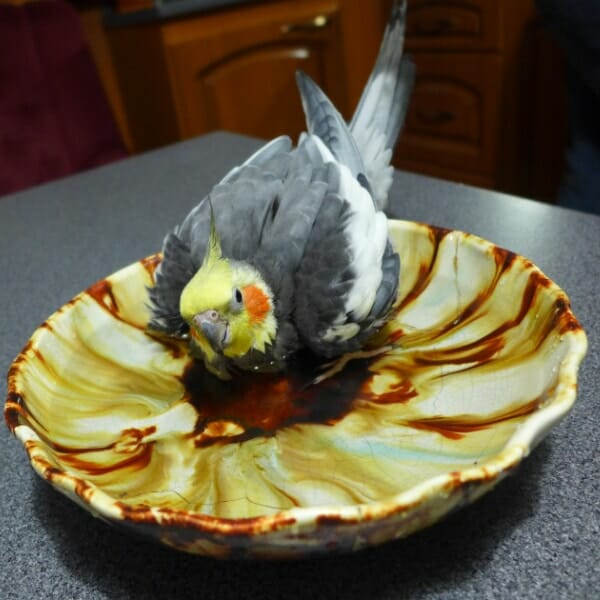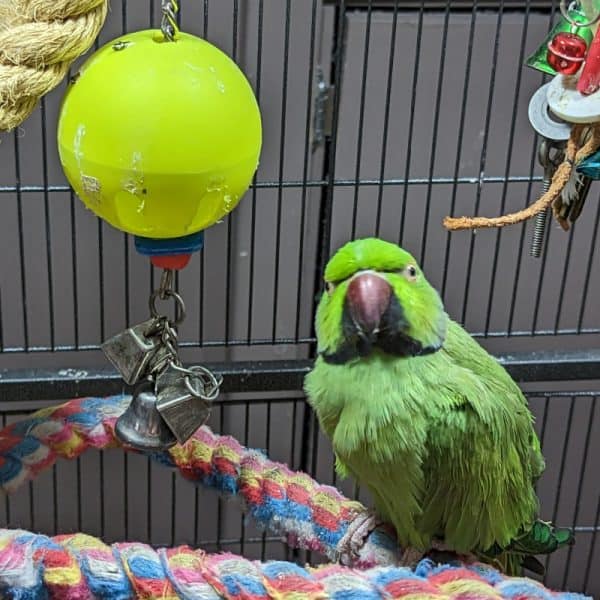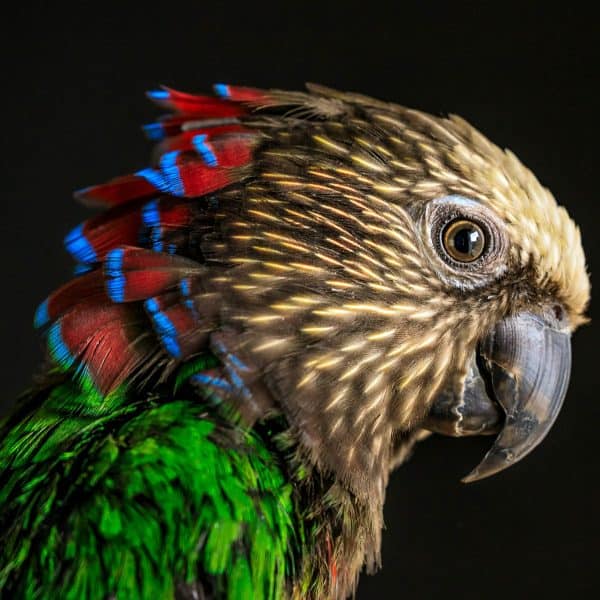Last Updated on by Mitch Rezman
At the end of the day, it’s best to ensure that your birds are bathed on a regular basis and allow them to preen their feathers part of any bird’s routine.
In spite of my esteemed associate Mr. Klugman (from Quora) endorsing a Deionized Water commercial spray – I’m going to advocate you not even bring the stuff into the house.
See the problem I have with Deionized water starts with an article by Anne Marie Helmenstine, Ph.D.Updated March 20, 2017, referencing World Health Organization. Frantisek Kozisek. Health Risks from Drinking Demineralized Water. National Institute of Public Health, Czech Republic (retrieved September 16, 2015).
One of the reasons stated is “There is substantial evidence drinking DI disrupts mineral homeostasis. Long-term use of deionized water as drinking water may cause organ damage, even if additional minerals are present elsewhere in the diet. The entire article can be found here.
If you spray your bird with deionized water, they are going to ingest it through preening, and “deionized water may contain contamination in the form of bits of ion exchange” resin. You’ve been warned.
Getting back on track, here are 7 videos on how to bathe a bird including a budgie
Bathing your bird will only make the feathers brighter as light is emitted prismatically for a brief time before all the water has evaporated.
Feather color is affected not only by the bird’s diet and DNA but by whose eyeballs are perceiving the color(s). For example, if the bird doesn’t have a healthy sheen to it, what you might be seeing is a dark blue but the appearance of blue light-scattering is diminished thus the blue may look muted (black). Read more:
There are 3000 – 8000 feathers on your bird (based on species and size) which are created from amino acids that come from protein. A bird eating a diet high in fat but low in protein is going to have less of a feather sheen that can not be compensated for by water or bathing.
To illustrate mother nature’s sense of humor here’s a video of certain birds that bathe in the dirt.
A bird who is laying eggs needs caloric energy derived from protein to help her breed. This makes less protein available for feather production especially just after a molt which provides a double whammy in terms of the caloric need for growing all those new feathers and producing eggs.
Thus it’s important to pay attention to your bird’s activity ensuring that you supplement your birds diet with enough caloric-producing nutrition. Just because your bird is on a pellet diet does not ensure total nutrition.
Some pellet diets are species agnostic meaning it is the same diet for all the birds but just different sizes. A large flighted macaw parrot has a much higher caloric need than a budgie with clipped wings relatively speaking.
Other pellet diets take into account the species in the size of the bird providing more appropriate nutrition. Although fresh fruits and vegetables are a wonderful addition to any bird’s diet you still have to ask yourself “where is the protein coming from?”
I know we started out with a simple question about “how do I bathe my bird” but there’s nothing simple about birds. You can mist them with a sprayer, bring them in the shower with you or let them adapt to the kitchen sink. Most birds inevitably will enjoy the moisture on their feathers.
For those that are not aware that when birds preen, (if you watch them), many times they start by their little butts. This is because there is a preening gland called the uropygial gland providing oil to keep their feathers in tip-top shape.
One of the exceptions to this is Amazon parrots who have no preening glands.
Written by Mitch Rezman
Approved by Catherine Tobsing
Your Zygodactyl Footnote
Author Profile
Latest entries
 The Traveling BirdJune 26, 2025Can You Name 5 Parrot Species That Are Living Wild in the USA?
The Traveling BirdJune 26, 2025Can You Name 5 Parrot Species That Are Living Wild in the USA? Bird BehaviorJune 26, 2025How is it Parrots Are Problem Solvers Social Animals and Even Use Tools?
Bird BehaviorJune 26, 2025How is it Parrots Are Problem Solvers Social Animals and Even Use Tools? Bird & Parrot AnatomyJune 25, 2025How a Tiny Chemical Modification Makes Parrots Nature’s Living Paintings
Bird & Parrot AnatomyJune 25, 2025How a Tiny Chemical Modification Makes Parrots Nature’s Living Paintings PigeonsJune 20, 2025How Do Parrots Thrive in Cities Outside Their Native Habitats?
PigeonsJune 20, 2025How Do Parrots Thrive in Cities Outside Their Native Habitats?




